 The experimental setup at the IdeaSquare, CERN was build and calibrated in collaboration with Geneva University for electrical and optical characterisation of various SiPM devices at room temperature.
The experimental setup at the IdeaSquare, CERN was build and calibrated in collaboration with Geneva University for electrical and optical characterisation of various SiPM devices at room temperature.

Here a general view of the developed and calibrated experimental setup.
Electrical characterization
The developed setup allows both static DC and dynamic AC tests on various SiPM detectors in dark or under light illumination of various wavelengths. All measurements are automatized through a LabView framework.
During the DC measurements (i.e. reverse or forward current-voltage IV), the SiPM device is directly connected to a Keithley 6487 picoammeter for bias supply and current measurement. Such kind of measurements can be used to calculate quenching resistor Rq, breakdown voltage VBD and SiPM working range.
The data acquisition system for AC measurements, consisting of a pre-amp based on the operational amplifier OPA846, an oscilloscope Lecroy 610Zi for the waveform acquisition and a picoammeter Keithley 6487 for SiPM bias supply. The Keithley 6487 is connected through RC filter to suppress high frequency electronics noise from bias line. Acquisition can be triggered by external (pulse generator, LED or laser driver, etc.) or internal (SiPM amplitude) triggers. From AC measurements the SiPM parameters like: breakdown voltage VBD, Gain, micro-cell capacitance Cμcell, dark count rate DCR, and optical cross-talk PXT can be calculated.
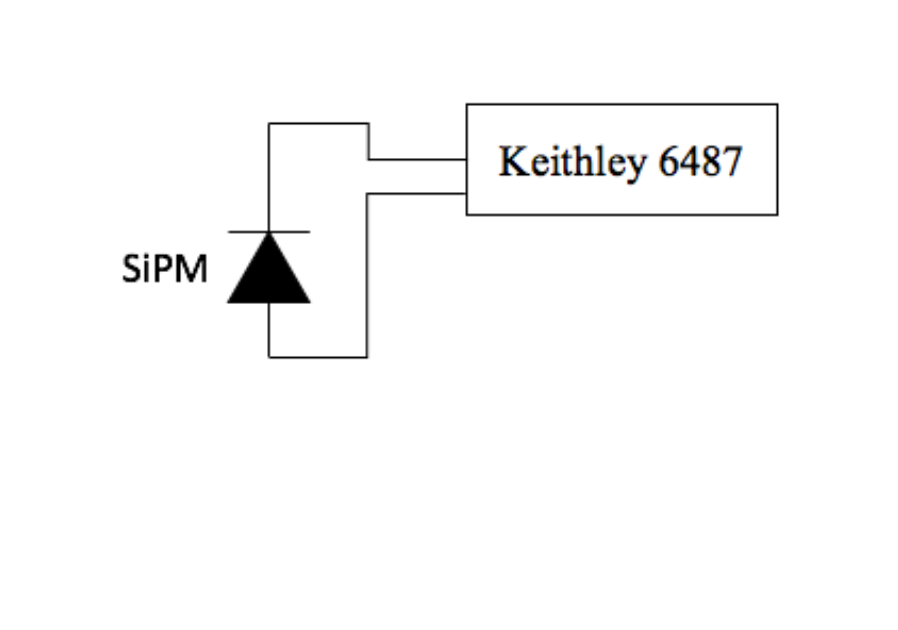
Electrical schematic to provide DC measurements of SiPM devices.
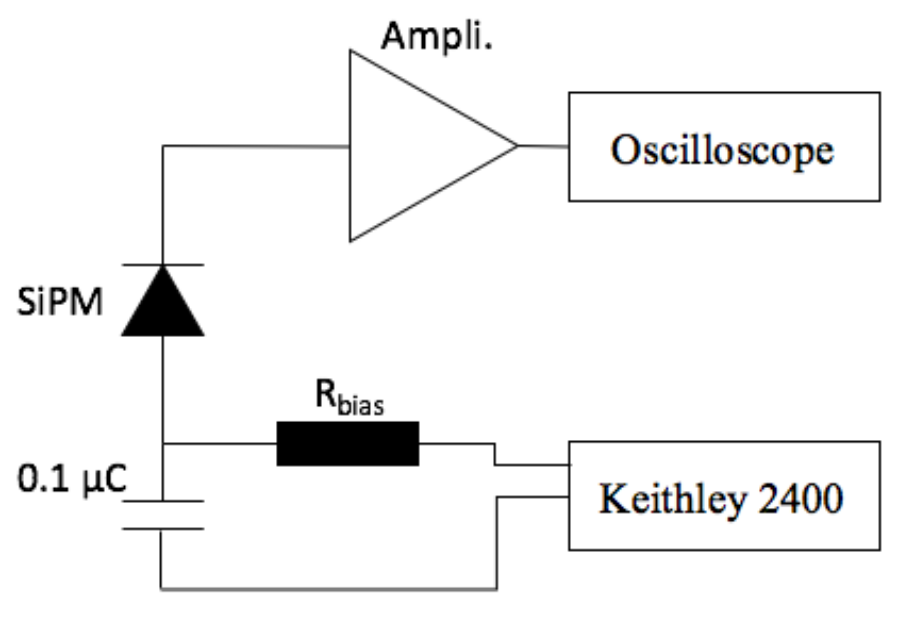
Electrical schematic used to provide the AC measurements of SiPM devices.
Optical characterization
For optical characterization, in particular for photon detection efficiency (PDE) measurements the experimental set-up is equipped by a continuous and pulsed light sources of various wavelengths. The SiPM can be illuminated by:
- continuous light from 75W Xe lamp (ORIEL Instruments TLS-75X) coupled with a monochromator, to set a given wavelength in range from 260 nm up to 1200 nm, for relative PDE measurements;
- pulsed light from LED (biased by pulse generator) for absolute PDE measurements. The LED of various wavelenghts are available: 280, 340, 375, 405, 420, 455, 470, 505, 525, 530, 565, 572 and 630 nm.
The calibrated photodiode (Hamamatsu S1337-1010BQ, s/n 61) is used to measure the absolute light intensity. The incoming light is spreaded between SiPM and photodiode by an integrated sphere (Thorlab, Model IS200-4). Here is the schematic layout of the experimental setup developed for absolute and relative PDE measurements.
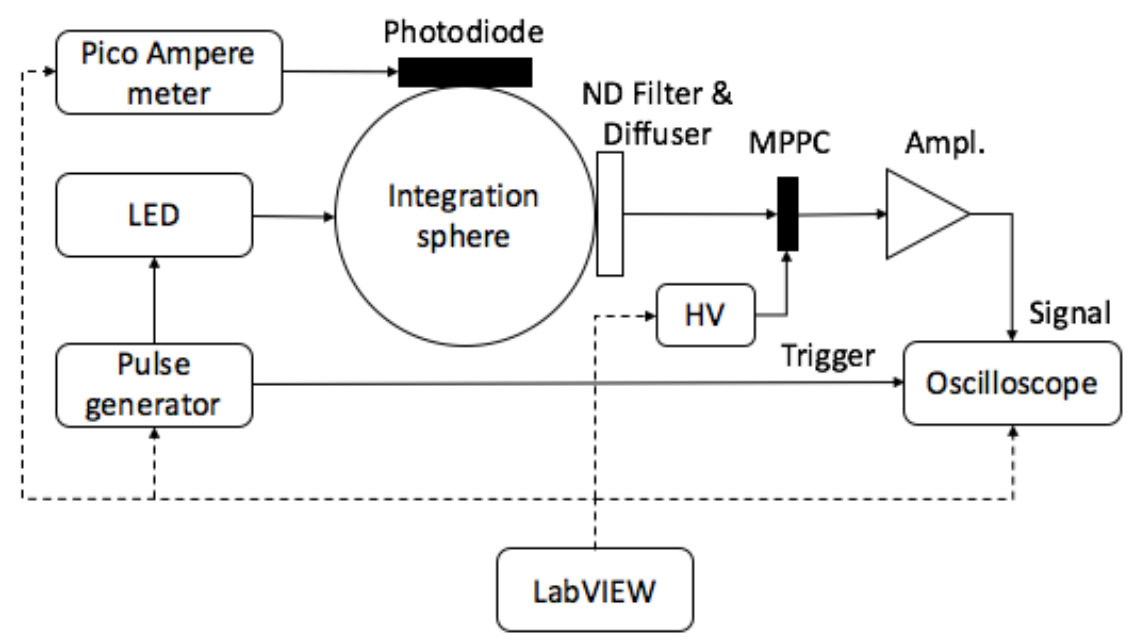
Schematic layout of the absolute PDE measurement setup with pulsed light.
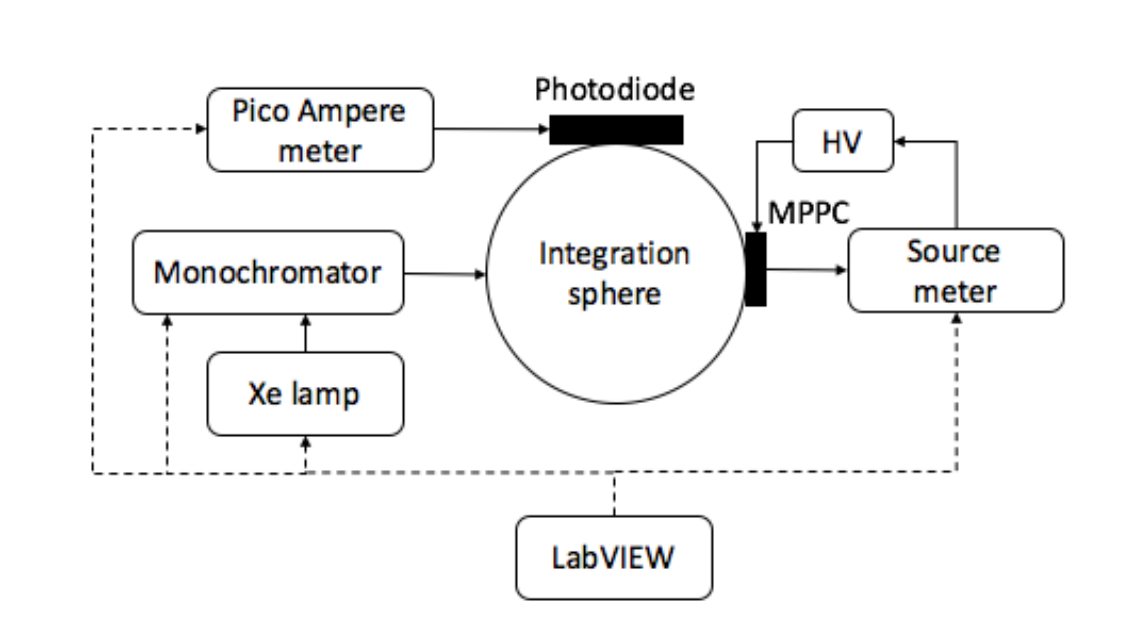
Schematic layout of the relative PDE measurement setup with continuous light.
Form the sketch of the absolute PDE measurements we can observe that to reduce the amount of light reaching the SiPM, an absorptive Neutral Density Filter ND Filter (Thorlab, Model NE530B) is mounted between the integrating sphere`s output port and the SiPM. Also, to uniformly illuminate full active area of studied SiPM device the 50° Square Engineered Diffuser (Thorlab, ED1-S50-MD) was mounted after ND Filter.
Example of experimental results
As an example, the typical results obtained for the large area hexagonal SiPM produced by Hamamatsu in collaboration with the University of Geneva, which is being employed to build gamma-ray cameras suitable for the Cherenkov Telescope Array Observatory are presented:

The custom SiPM of hexagonal shape developed by Hamamatsu in collaboration with the University of Geneva. The sensor is divided into 4 trapezoidal channels of 9210 square cells each. The NTC sensor placed in close proximity of the SiPM allows accurate monitoring of the temperature.
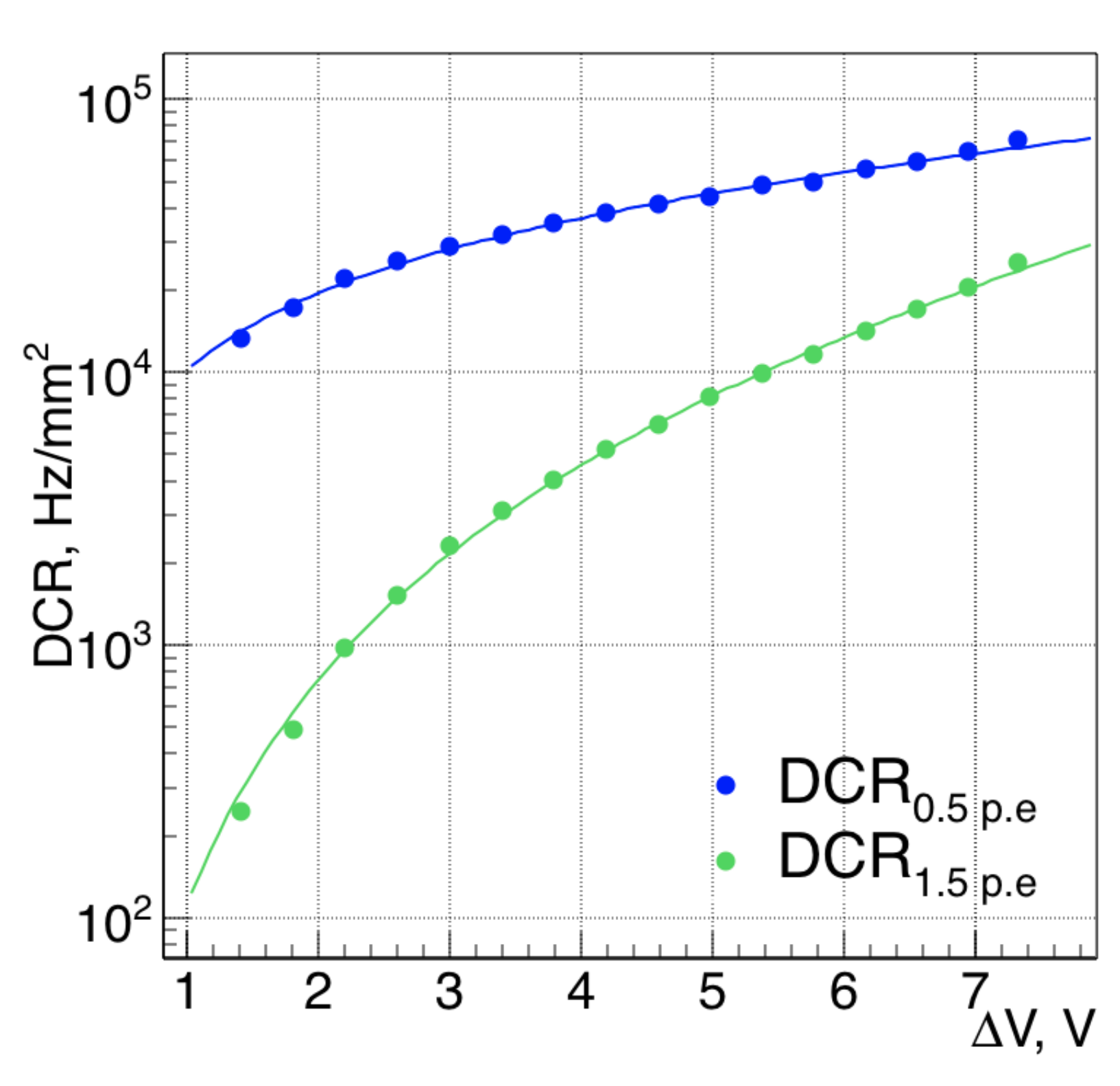
DCR as a function of overvoltage. The results are presented for 0.5 and 1.5 p.e. thresholds.
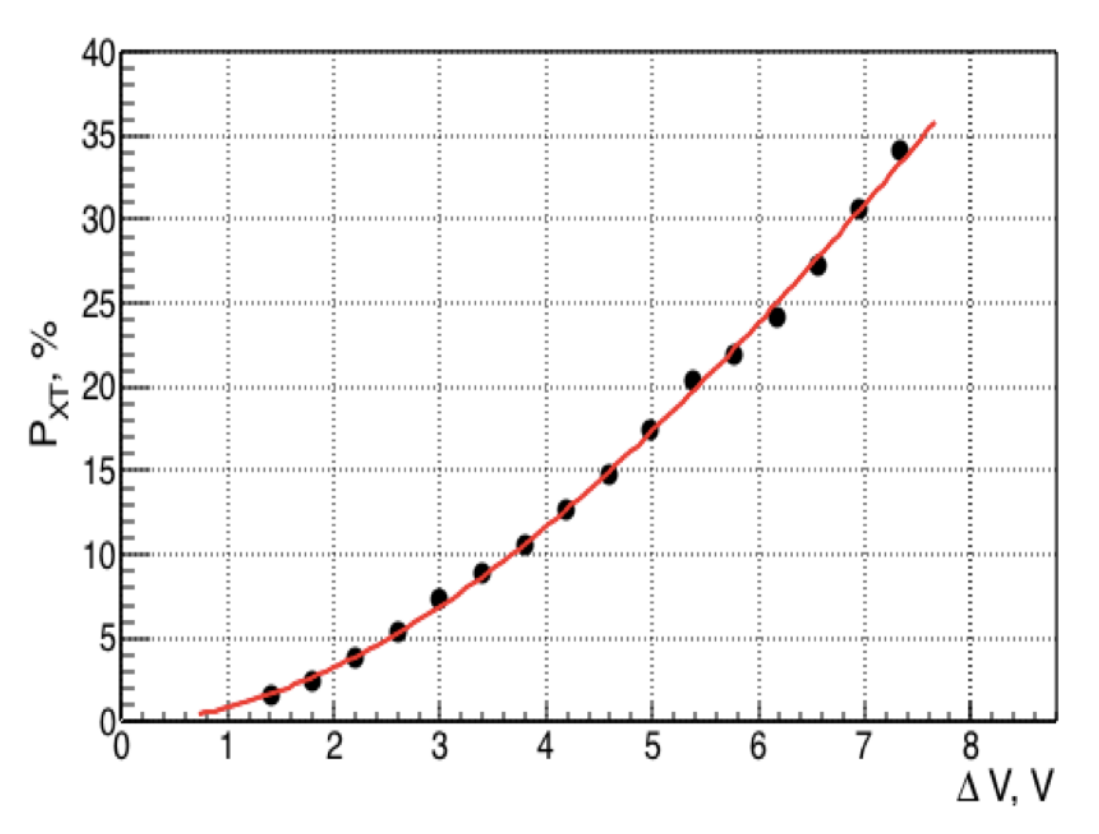
Optical crosstalk as a function of Overvoltage.
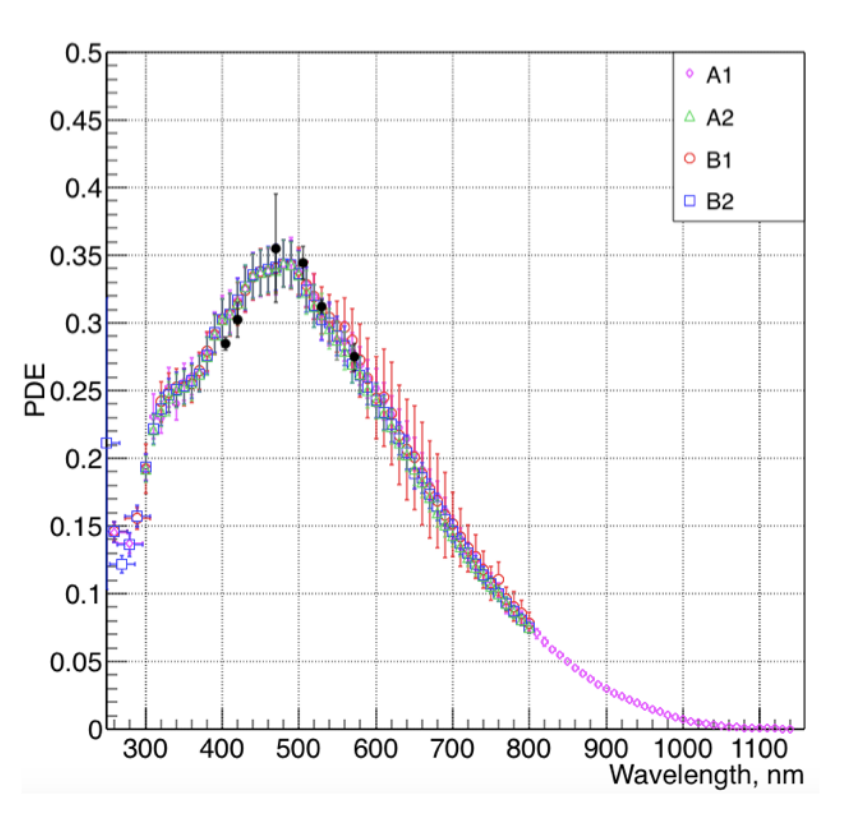
Photon detection efficiency at 2.8 V overvoltage as a function of light wavelength. The results are presented for all four channels.
Contact
Andrii Nagai & Theresa Montaruli
Université de Genève
Département de physique nucléaire et corpusculaire
Section de Physique
This email address is being protected from spambots. You need JavaScript enabled to view it.
Phone nr : +41 22 379 63 57
